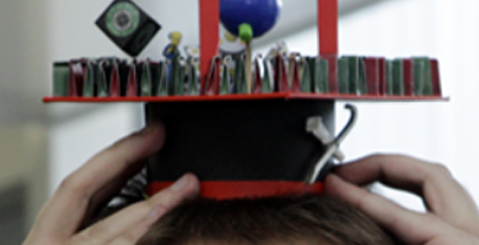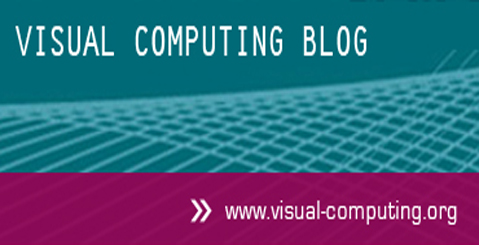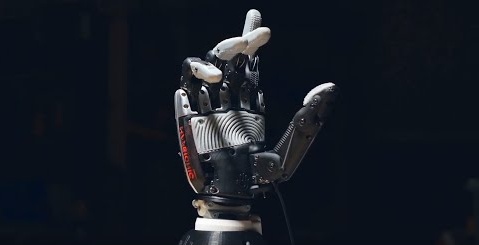Collaborative Research Center
SFB-TRR 161
Quantitative Methods for Visual Computing
We are living in a data society in which data is generated at amazing speed; individuals, companies, organizations, and governments are on the brink of being drawn into a massive deluge of data. The great challenge is to extract the relevant information from vast amounts of data and communicate it effectively.
Typical scenarios include decision and policy making for urban and environmental planning or understanding relationships and dependencies in complex networks, e.g., social networks or networks from the field of bioinformatics. These scenarios are not only of interest to specialized experts; in fact, there is a trend toward including the broad public, which requires the information to be presented in a reliable, faithful, and easy-to-understand fashion.
Visual computing can play a key role in extracting and presenting the relevant information.
In visual computing research the aspect of quantification is often neglected. The SFB-TRR 161 seeks to close this gap.
The long-term goal is to strengthen the research field by establishing the paradigm of quantitative science in visual computing.
News
June 2025
ERC Advanced Grant for Albrecht Schmidt
Leader of SFB-TRR 161 Project C06 explores and develops AI systems that store and process human experiences.
» more »
ETVIS Workshop at ETRA 2025
Successful workshop co-organized by SFB-TRR 161 members examines the intersection of eye tracking research with visualization.
» more »
May
SFB-TRR 161 at the Science Day of the University of Stuttgart
At the annual open science day of the University of Stuttgart, SFB-TRR 161 researchers invite visitors to become immersed in the world of visualization research.
» more »
SFB-TRR 161 Events
Jul 11th, 2025, full day
Ulm University
4th Workshop on Women* in Computing: Building Bridges and Breaking Borders: Networking & Moving in the International Career Landscape
In this half-day workshop, we focus on the impact and challenges of moving between countries and the role of networking during a career in computing. We have invited a selected number of successful researchers from industry and academia who will take the stage to share their perspectives and unique insights into their careers and research domains. With this event, we aim to foster mentorship in career development for young (female) researchers by establishing and strengthening a network of Women* in Computing.
Oct 6th - 7th, 2025, full days
Internal Status Seminar of the SFB-TRR 161
May 16th, 2025, 10 am - 12 pm
The talks had to be cancelled. They will be rescheduled as soon as possible.
University of Stuttgart
1st Talk | Towards Responsible Visual Analytics: Fostering Inclusivity, Accessibility and Trustworthiness in the AI Era
Held by: Ali Sarvghad, University of Massachusetts, Amherst
Abstract:
As data visualizations play an increasingly pivotal role in shaping decisions across personal, public, and scientific domains, ensuring their ethical, inclusive, and accessible design has become more crucial than ever. My work, driven by the growing role of visualizations in decision-making and the integration of AI in the data analysis pipeline, delves into the ethical and responsible dimensions of data visualization. In this talk, I explore the convergence of theory and emerging technologies in advancing responsible visual analytics. Through examples from my research, I will illustrate how understanding graphical perception across diverse audiences, such as older adults, utilizing conversational agents to enhance data collection, and applying differential privacy to safeguard individual privacy fosters inclusion and trust throughout the data lifecycle—from collection and analysis to insight discovery and decision-making. Through real-world applications and empirical research insights, this talk invites a critical rethinking of the ethical responsibilities of visual analytics and proposes a future where applied AI can catalyze ethical and equitable advancements in visual analytics.
Bio:
Ali Sarvghad is a senior visualization researcher and co-director of the HCI-VIS Research Lab in the Manning College of Computer and Information Sciences at the University of Massachusetts Amherst. He is currently a visiting researcher at INRIA with the AVIZ team. His research spans Information Visualization and Responsible Visual Analytics, with a focus on designing, developing, and evaluating novel visualization techniques and frameworks that promote ethical, inclusive, and accessible data analysis. Over the past decade, Ali’s work has bridged theoretical advancements and practical applications, providing empirically grounded guidelines and innovative tools to advance the field of responsible visual analytics. Ali holds a Ph.D. in Computer Science from the University of Victoria, Canada, an M.S. in Software Engineering, and an Honors B.S. in Computer Science from the University Science Malaysia. He was a postdoctoral fellow in the Design Lab at the University of California, San Diego. His research has been recognized with several accolades, including Best Paper Awards at CSCW 2021 and EuroVIS 2022, and Honorable Mention Awards at CHI 2024, CHI 2022, DIS 2021, and VIS 2012.
2nd Talk | Community-Centered Computing for Collective Action and Societal Impact
Held by: Narges Mahyar, University of Massachusetts, Amherst
Abstract:
Today’s world faces several complex problems, such as climate change, transportation, infrastructure, education, and healthcare. Technology, if designed right, can play an essential role in informing people, raising awareness, sharing data, and connecting communities and decision-makers to make data-informed decisions. In this talk, I present examples of my work on building and studying community-centered tools to empower the general public to engage in real-world sociotechnical problems such as urban planning and climate change. These examples demonstrate my multidisciplinary approach in combining HCI, social computing, information visualization, and human-centered AI to design and build innovative tools and visualization technologies to address complex sociotechnical problems. I will also briefly discuss my work on critical data visualization, which seeks to empower individuals and communities to better understand the data shaping their personal and collective lives. Finally, I will outline my vision for expanding my research to advance democracy, equity, well-being, and sustainability by fostering the inclusion and empowerment of the general public.
Bio:
Narges Mahyar is an Associate Professor in the Manning College of Information and Computer Sciences at the University of Massachusetts Amherst. She was a 2024–2025 Radcliffe Fellow at Harvard University. Narges’s research intersects Human-Computer Interaction, Information Visualization, Social Computing, and Design. She designs, develops, and evaluates novel social computing and visualization techniques that help people explore, understand, and make data-informed decisions. Over the past decade, she has focused on the emerging interdisciplinary area of “Digital Civics,” which explores new strategies for scaling and diversifying public engagement in massive decision-making processes related to civic issues such as sustainable urban design and climate change mitigation. She holds a Ph.D. in Computer Science from the University of Victoria, an M.S. in Information Technology from the University of Malaya, and a B.S. in Electrical Engineering from Tehran Azad University. She was a postdoctoral fellow in the Department of Computer Science at the University of British Columbia from 2014 to 2016 and in the Design Lab at the University of California San Diego from 2016 to 2018. Her recognition in the field has been repeatedly confirmed through many accolades for her research, including five Best Paper Awards from CHI 2023, Eurovis 2022, CSCW 2020, the Council of Educators in Landscape Architecture 2017, and VAST 2014, as well as three Best Paper Honorable Mention Awards from TiiS 2022, DIS 2021, and ISS 2016.
Location:
University of Stuttgart, VISUS, Room 00.012
The talk is available via WebEx.
Meeting-ID (access code): 2784 288 7690
Meeting password: PFy69wsmxw8
For participants via WebEx: The transmission will kindly be managed by Patrick Gralka. He will be on site and monitor/manage the WebEx-Session incl. Q&A during and after the talk as well. Please don´t hesitate to get in touch with Patrick in case of questions or problems regarding the transmission/your online participation: Patrick.Gralka@visus.uni-stuttgart.de
Further Information & Resources
YouTube
The SFB-TRR 161 produces videos to give insights into the projects and the ongoing research. Please visit our YouTube Channel.
Graduate School

PhD students of the projects at the Universities of Stuttgart and Konstanz learn and do research together on their way to their doctoral degree in visual computing.
Visual Computing Blog

The scientists of the SFB-TRR 161 as well as guest authors blog about their activities in computer graphics, visualization, computer vision, augmented reality, human-computer interaction, and psychology.
Partners of the SFB-TRR 161
FOR SCIENTISTS
Projects
People
Publications
Graduate School
Equal Opportunity
FOR PUPILS
PRESS AND MEDIA
© SFB-TRR 161 | Quantitative Methods for Visual Computing | 2019.





















